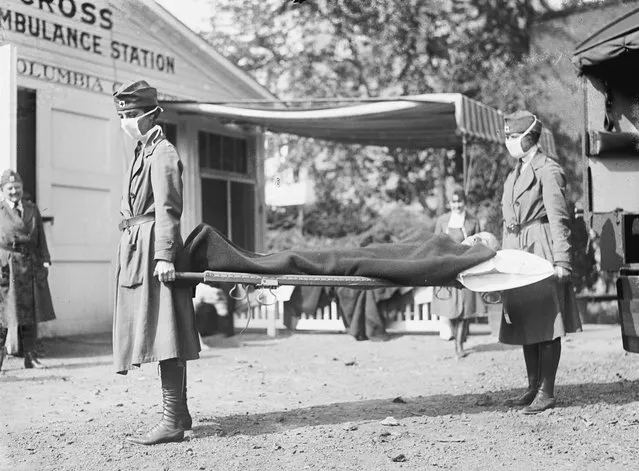
Demonstration at the Red Cross Emergency Ambulance Station in Washington, D.C., during the influenza pandemic of 1918. (Photo by National Photo Company/Wikimedia Commons)

Leslie Cliff and his wife Violet, English figure skating pair. Olympic games of Garmisch-Partenkirchen (Germany), 1936. (Photo by Roger Viollet Collection/Getty Images)
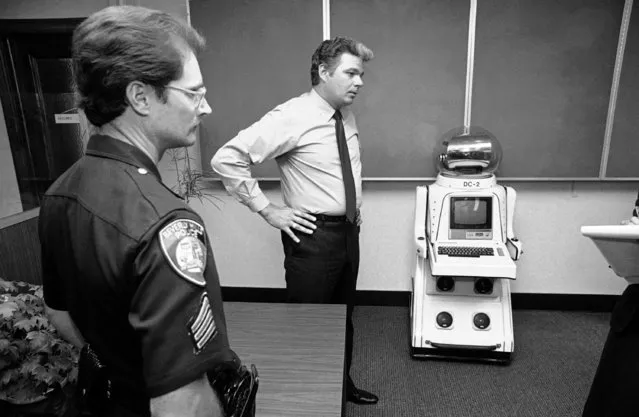
Sgt. Tom Van Ansdell of the Beverly Hills, Calif., police department displays a 4-foot robot at police station in Beverly Hills on August 18, 1982. The robot, complete with color television screen and camera, micro computer and two-day communications, was taken into police custody after it was found clanking through Beverly Hills during Tuesday rush hour. Police took the robot into custody when the person, as yet unidentified, operating it by remote control, refused to identify himself to police. (Photo by Lennox McLendon/AP Photo)
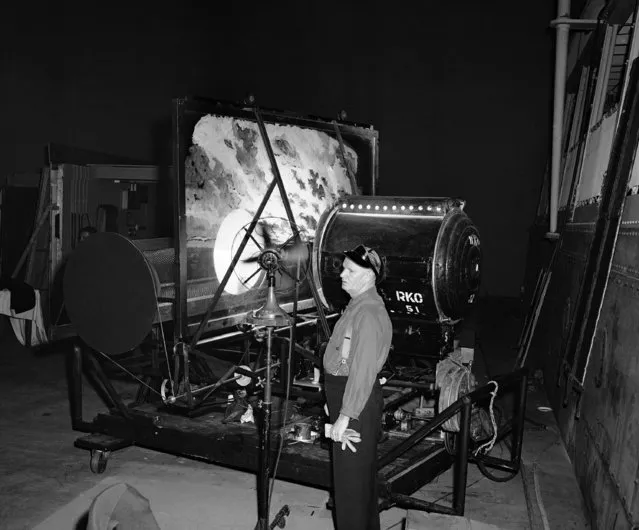
Hollywood can't go to the ocean, because of wartime restrictions, so the ocean comes to Hollywood, through this machine which creates waves and clouds in the studio, for sea pictures in Hollywood on August 24, 1943. Electrically operated, the machine, which resembles a bread-mixer, projects clouds and sea in motion on a backdrop in such a way that the camera picks up the image, and a stationary ship on a stage seems to be pitching in waves. So realistic is the effect that cast and crew often complain of seasickness. The device was created by technical “The Ghost Ship”, and won the Academy Award for outstanding technical development. (Photo by AP Photo)
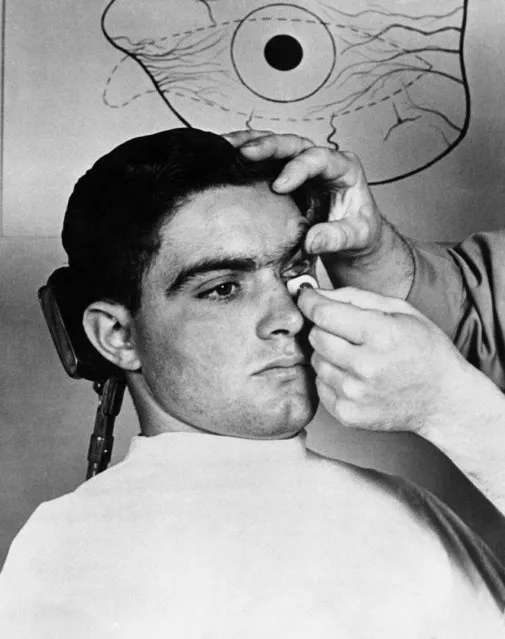
A man is fitted with an prosthetic eye, December 22, 1944. (Photo by AP Photo)
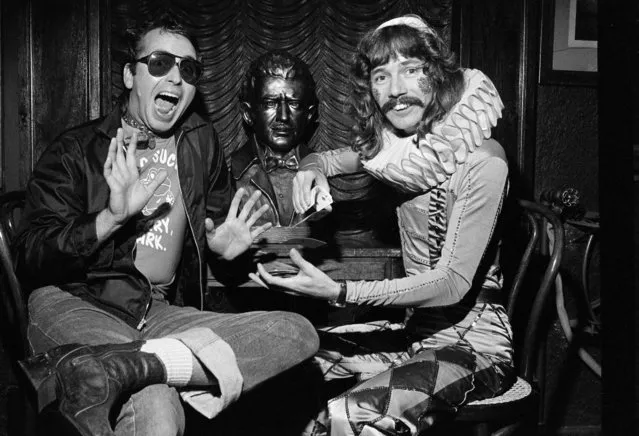
Magician Doug Henning, right, shows actor John Ritter a card trick as they celebrate Halloween, October 31, 1978, at the Magic Castle, a private magicians' club in Hollywood. Behind them is a bust of the magician Harry Blackstone. (Photo by Reed Saxon/AP Photo)
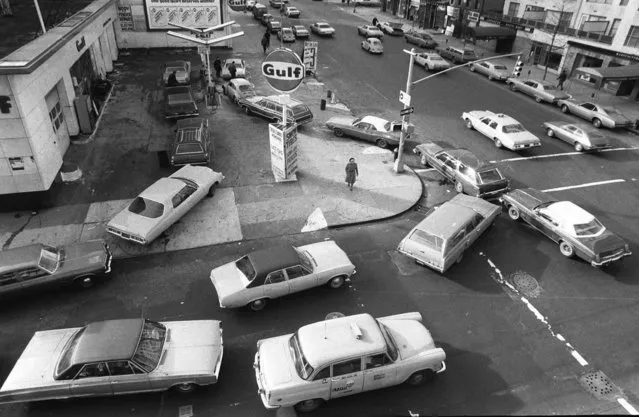
Cars line up in two directions on Sunday December 23, 1973 at a gas station in New York City. The gas station remianed opened despite President Nixon's plea for stations to close on Sundays. (Photo by Marty Lederhandler/AP Photo)
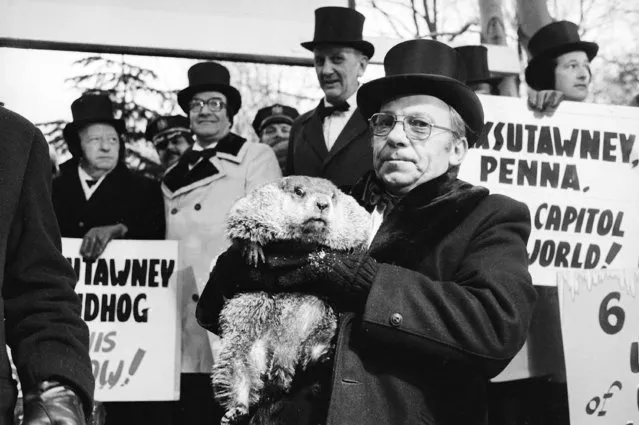
Jim Means holds up a sleepy Punxsutawney Phil at daybreak, February 2, 1980, in Punxsutawney, Penn., in front of a crowd of anxious people. The groundhog saw his shadow and proclaimed six more weeks of winter. Means cares for Phil throughout the year in the animal's home in the town library. (Photo by AP Photo)
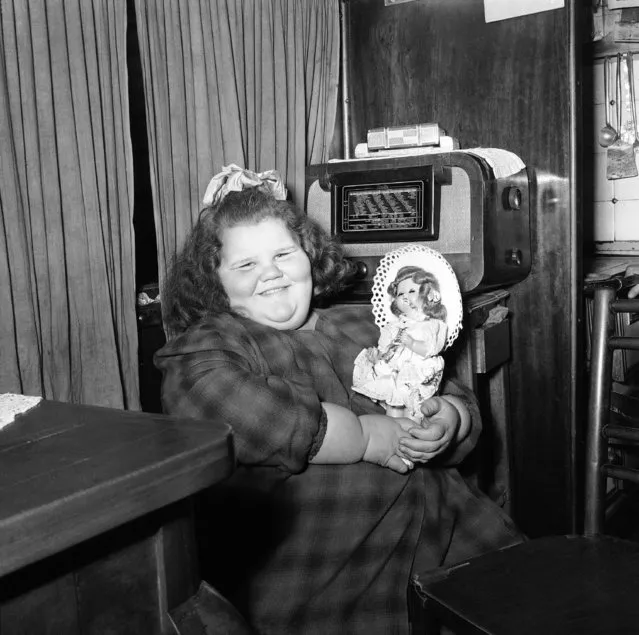
Holding her dolly is Michelina Valente, 8 years old and 300 pounds, who is traveling with a circus in Milan, Italy on February 15, 1954. She was born in Naples. (Photo by Fedele Toscani/AP Photo)
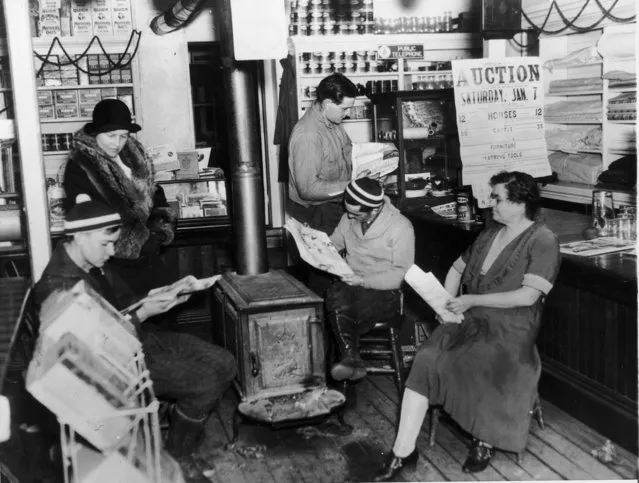
Saddened townspeople at the general store in Plymouth, Vermont read about the passing of their beloved citizen former U.S. President Calvin Coolidge, January 6, 1933. From left to right; Erik Blanchard; Mary Brown, schoolteacher; Robert Goodrich; Herman Pilkey and Miss Florence Cilley, storekeeper and post office clerk. (Photo by AP Photo)
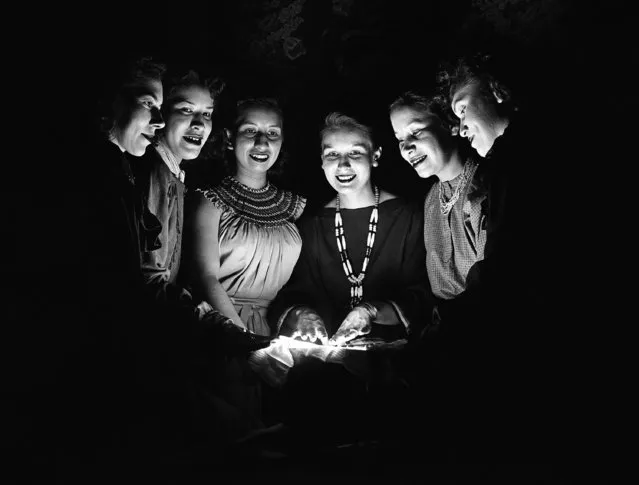
Practicing for the VIP (very important persons) original amateur radio program, scheduled for Washington on January 25, are these women shown January 19, 1951 from left to right are Mae Beaupre of Detroit Lakes, Minn., a Chippewa; Ruby Anderson, Holdenville, Okla., a Creek; Jeanne Duncan, Wrstville, Okla., a Cherokee; Evelyn Massey, Haskell, Okla., a Cherokee; Bernese Bonga, walker, Minn., a Chippewa; and Charlotte Heade, Barga, Mich., a Chippewa. (Photo by William Smith/AP Photo)
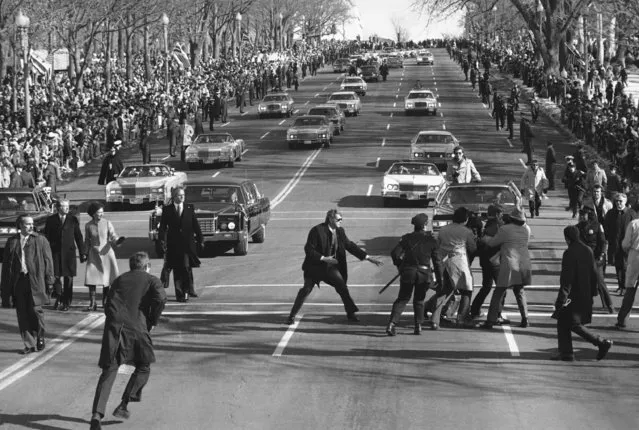
President Jimmy Carter and first lady Rosalynn watch, left, as police and Secret Service officials remove a spectator, right, who burst into the Inaugural Parade on Pennsylvania Avenue Thursday, January 20, 1977 in Washington. (Photo by AP Photo)
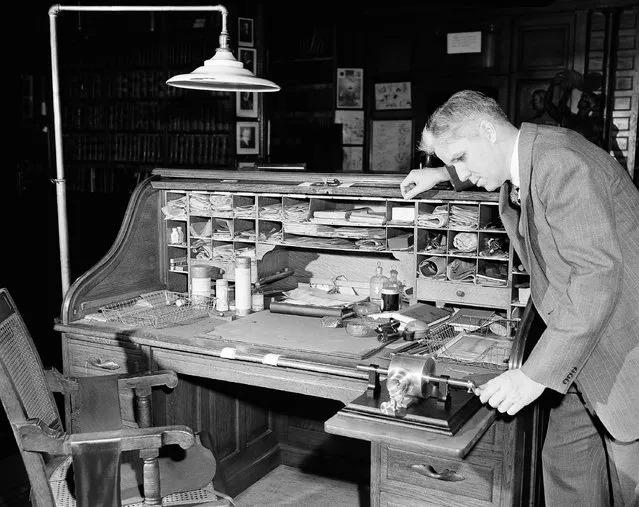
At the private desk of Thomas A. Edison, Norman R. Speiden, curator of the library on January 27, 1948, studies the inventor's original phonograph, made in 1877. The contents of the desk, as they were found when it was opened in 1946, fifteen years after Edison's death, include a sealed can of lithium, bottle of reduced iron, chlorinated rubber, “Carissa” jelly made by a Mrs. Stevens in 1928, old papers and business letters and contract early phonograph, dating from 1878 to 1890. (Photo by Carl Nesensohn/AP Photo)
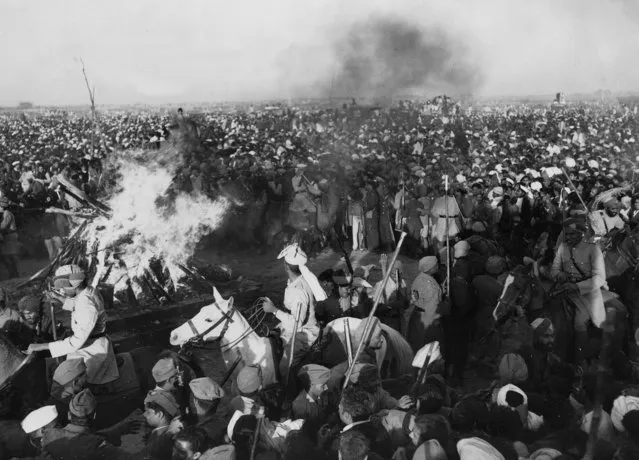
Gandhis funeral pyre - Indian soldiers, cavalry and police use their rifles, lathis and clubs to force back the crowd who surged forward after Mahatma Gandhis sandalwood funeral pyre had been lit on the banks of the Jumna River, New Delhi, January.31, 1948. (Photo by AP Photo)
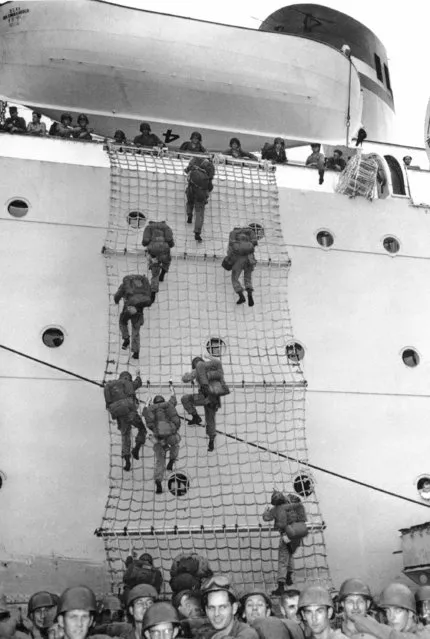
American troops leave a troop transport by nets into an LSU enroute to a landing in Korea on July 25, 1950. (Photo by AP Photo/U.S. Army)
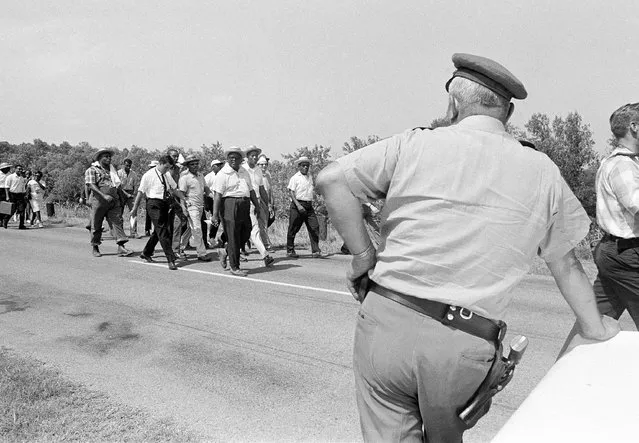
A Mississippi Highway Patrolman leans against a parked car along U.S. 51 as the front rank of marchers on the Memphis to Jackson trek approaches across the highway near Coldwater, Mississippi on June 9, 1966. Nobel Prize winner Dr. Martin Luther King (light trousers) and other civil rights leaders lead the march. (Photo by AP Photo)
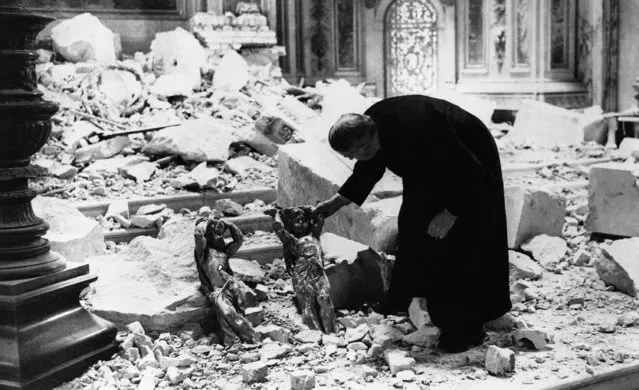
One of the clergy of St. Paul's cathedral in London looks at two cherubs standing among the debris and holding their heads as though for protection, October 10, 1940 in London. The destruction was caused by a bomb. (Photo by AP Photo)
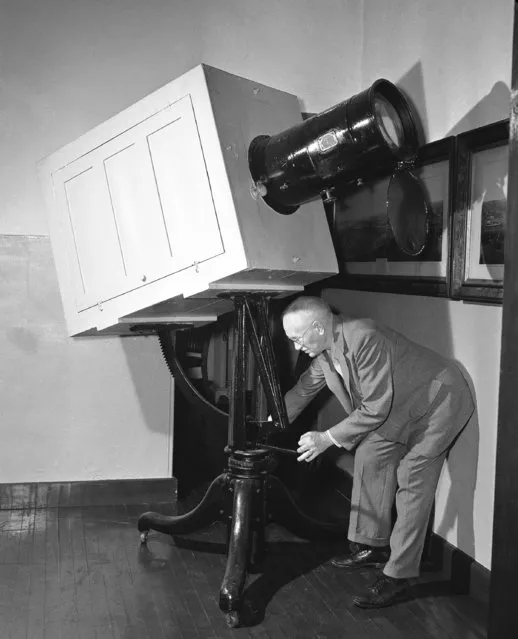
Dr. A.J. Olmstead of the Smithsonian Institution, adjusts the only known example of a “Woodward Solar Camera” in Washington, D.C., October 24, 1944. The camera, manufactured between 1857 and 1877 was the first means available to commercial photographers to make enlargements on the then slow bromide paper, using the sun as a source of illumination. Miss Edna Billings of Racine, Wis., found the camera in a shed near her home while searching for metal for the nation's scrap drive. (Photo by Robert Clover/AP Photo)
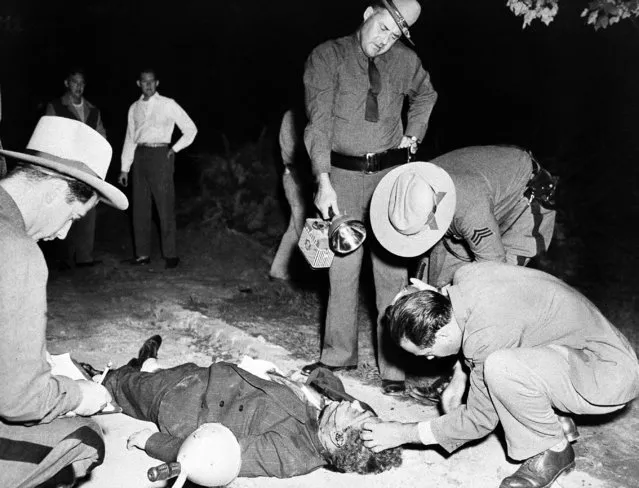
The bullet-riddled body of a man identified by police as Phil “Little Farvel” Cohen, 43, former member of Brooklyn's Murder, Inc., is inspected by state troopers and a medical examiner at Valley Stream, New York, September 15, 1949. Police said there was little question that Cohen's slaying was linked to gangland vengeance. It was Cohen's testimony that helped send Louis “Lepke” Buchalter and two others to the electric chair. (Photo by AP Photo)
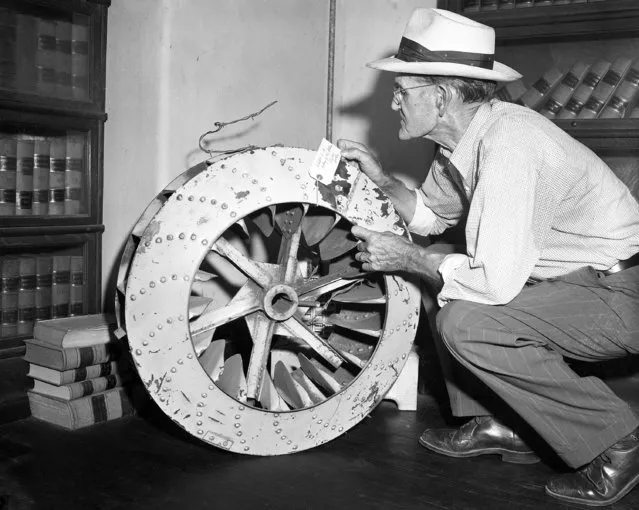
In this Sept. 22, 1955 file photo, a cotton-gin fan is presented as evidence in the trial investigating the death of 14-year-old Emmett Louis Till, in Sumner, Miss., on September 22, 1955. The fan had been tied around the boy's neck with barbed wire when his body was found in the Tallahatchie River near the Delta community of Money, Mississippi, on August 31, 1955. The case is one of nearly one hundred unsolved racial killings that has been prosecuted under the FBI's Cold Case Initiative. Hopes were raised, say family members of the victims, but justice has not followed. (Photo by AP Photo)
26 Feb 2018 00:01:00,
post received
0 comments
